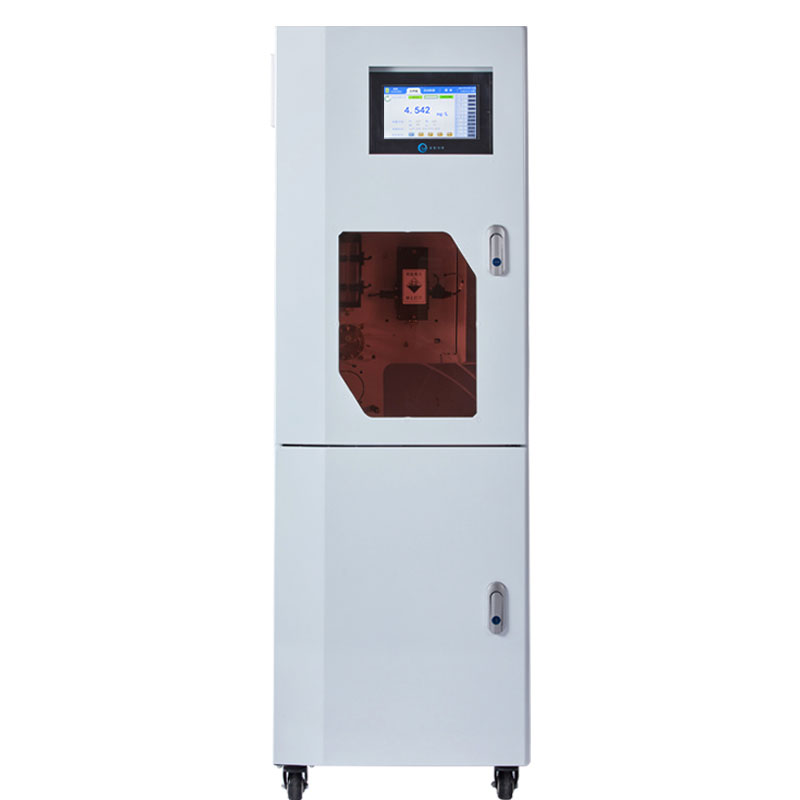Tianqiong Sensor IOT Technology Co., Ltd
Sales Manager:Ms. Emily Wang
Cel,Whatsapp,Wechat:+86 15898932201
Email:info@fengtutec.com
Add:No. 155 Optoelectronic Industry Accelerator, Gaoxin District, Weifang, Shandong, China

Sales Manager:Ms. Emily Wang
Cel,Whatsapp,Wechat:+86 15898932201
Email:info@fengtutec.com
Add:No. 155 Optoelectronic Industry Accelerator, Gaoxin District, Weifang, Shandong, China

Model:FT-Cr2
Brand:tianqiong
1.Hexavalent Chromium Analysis Principle
Hexavalent Chromium Analysis is used to measure hexavalent chromium in water and was developed to determine the hexavalent chromium content of groundwater and industrial wastewater.This product is measured by diphenylcarboyldihydrazine spectrochromic method.After mixing the water sample with the regulator, the hexavalent chromium reacts with the indicator in the presence of an acidic environment and an indicator to form a chromatic complex.The analyzer detects the change of this color and converts this change into the hexavalent chromium value and outputs it.The amount of chromic complex produced is equivalent to the amount of hexavalent chromium.
2.Features of Hexavalent Chromium Analysis
The new optoelectronic quantitative technology is not affected by interference such as large chromaticity, many suspended objects, and many bubbles.It has high reliability and accuracy and strong anti-interference ability.
High detection accuracy, low measurement limit, and low long-term drift of the instrument.
It has one-click self-test function and self-diagnosis function.
It adopts a single-channel high-integrated valve set, making maintenance and cleaning simple and fast.
All-weather networking function, monitoring the operating status of the instrument anytime and anywhere.
It has alarm function, quality control function and counter control function.
It has automatic cleaning function and automatic calibration function.
It has full-point measurement, interval measurement and external control measurement.
It works automatically after power failure recovery.
Automatic prompts and automatic reset functions for faults and reagents (samples).
It has fault logging function.
Can save historical data for more than 3 years.
Satisfies the separation of cleaning liquid and waste liquid
3.Hexavalent Chromium Analysis Technical Parameters
Measurement method: diphenylcarboyldihydrazine spectrophotochrome
Measuring range: 0-2 mg/L; 0-20 mg/L; range can be customized
Display error: ≤±8% detection limit: 0.01mg/L
Repeatability: ≤±5% Waste liquid volume: 6mL/time
Memory effect: ≤±0.3mg/L Actual water sample comparison: When the concentration is ≤0.400mg/L, comparison
When the detection error is ≤0.06mg/L, concentration is >0.400mg/L
Comparative detection error ≤±15%
Constant temperature time: 360 seconds Voltage stability: ≤±5%
Measurement cycle: 25 minutes Calibration cycle: any specified time
Maintenance cycle: ≥720h/time Maintenance workload: <2 hours/month
Reagent consumption: 3 months/500ml display output: configured with a 10.1-inch color LCD touch screen
Color rendering temperature: The recommended temperature is 125℃, which can be set according to the actual water sample condition
Data export: The measured value can be imported into the USB drive and saved in the USB drive.
Signal output: RS485/RS232/USB interface/standard 2-channel 4-20mA output/standard two-channel switching input and output
Environmental requirements: Indoors with controllable temperature, recommended temperature (5-28℃), humidity ≦90% (no condensation)
Power supply and power: (220V±22) V/AC, (50±0.5Hz), 5A, 150W
The mobility and dynamic changes of pollution sources have always been prominent challenges. The traditional model of manually tracing pollution sources and analyzing pollution characteristics not only consumes substantial time and human resources but also yields data lacking accuracy due to issues...
The Portable el detector is an important device used to detect various defects in photovoltaic (PV) cell modules. It can accurately detect defects such as hidden cracks, fragments, and poor soldering in PV cell modules. These internal defects can seriously affect the service life and long-term power...
In the field of geological hazard monitoring and early warning (such as landslides, collapses, ground subsidence, debris flows, etc.), GNSS monitoring stations are a core technical means used for accurately measuring surface displacement and deformation.GNSS equipment precisely determines its absolu...
There is a hidden hazard invisible to the naked eye in solar photovoltaic panels —— hidden cracks. This hazard can negatively impact the performance and lifespan of photovoltaic power generation systems. Let’s take a detailed look at it.Hidden cracks refer to fine cracks that occur in the cells o...